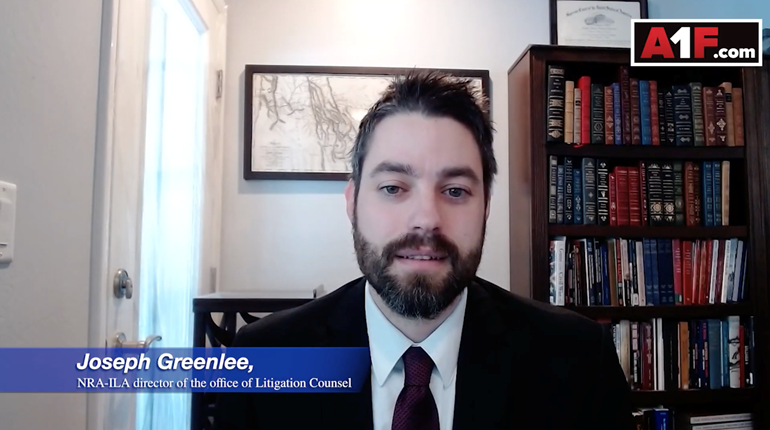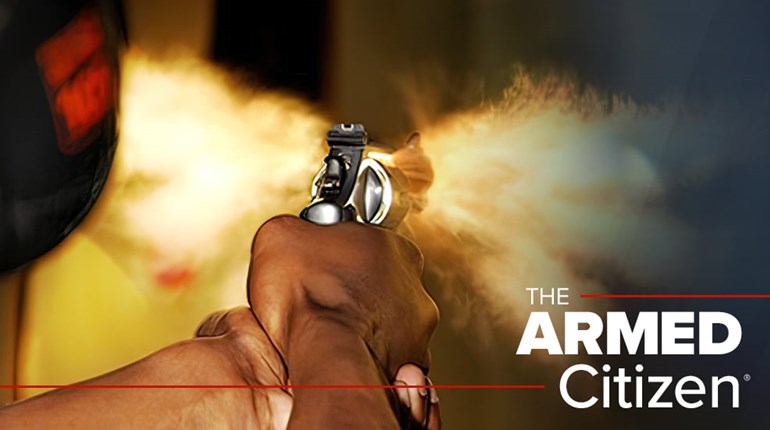
All gun owners who exercise their right to carry have had this experience. While running errands, picking up the kids, dropping something off at the city or county offices, grabbing a bite to eat, or maybe even just walking down the street, we’re confronted with a sign prohibiting firearms.
Sometimes the sign is there as a matter of law, other times as a means to signal unreasoned progressive virtue. As if intended merely as an insult to gun owners, such signs are rarely accompanied by any further security measures indicative of entry into a sensitive location.
As law-abiding gun owners, we’re then faced with a choice: forgo our fundamental right to self-defense or find an alternative way to go about our tasks by avoiding these locations or patronizing other businesses.
Whether meant as a deliberate affront to those exercising their right-to-carry, the vast majority of gun-free zones are certainly an affront to logic. Simple common sense would dictate that those intent on committing criminal violence have zero interest in empty warnings. Despite copious private and state funding, anti-gun activists and researchers have been unable to marshal a plausible case against this basic reasoning.
An examination of the available research on “The Effects of Gun-Free Zones” conducted by the RAND Corporation, updated earlier this year, came up empty. The think tank found no conclusive evidence that gun-free zones reduced violent crime, mass shootings, police shootings, suicide or unintentional injuries and deaths.
Rather, there is evidence suggesting violent criminals consider the likelihood of meeting armed resistance when choosing where to attack. Economist and More Guns, Less Crime author John R. Lott Jr. contends that the vast majority of mass public shootings have occurred in gun-free zones.
As of press time, details about a March 27 shooting at a Christian school in Nashville, Tenn., are still emerging. However, Nashville police indicated that the shooter had surveilled the location of the attack and eschewed another potential target based on its security profile. Discussing materials left by the murderer, Police Chief John Drake told reporters, “there was another location that was mentioned, but because of threat assessment by the suspect, too much security, they decided not to.”
The FBI has repeatedly acknowledged armed citizens’ ability to curtail violence in its periodic reports on active-shooter incidents. Moreover, high-profile armed citizen heroes such as Jack Wilson at West Freeway Church of Christ in White Settlement, Texas, and Elisjsha Dicken at Greenwood Park Mall in Greenwood, Ind., offer striking proof that good guys with guns save lives.
Of course, there’s also utility in allowing law-abiding citizens to exercise their right to carry to confront and prevent common crimes. The 2021 National Firearms Survey, conducted by William English, a Georgetown University political economist, estimated that “guns are used defensively by firearms owners in approximately 1.67 million incidents per year.” Further, the survey found that “[a]bout one out of ten (9.1%) defensive gun uses occurred in public.”
Some gun-free zones are the result of choices made by property owners or lessees. These decisions are often unfortunate, but for understandable reasons, legislators are reluctant to dictate to businesses how to use their own property. This is why NRA-ILA has worked to enact parking lot right-to-carry legislation that ensures customers and employees can keep a firearm for self-defense in their private motor vehicles while frequenting places that prohibit carry. Further, NRA-ILA supports legislation that shields business owners from liability should they allow carrying on their premises.
In recent years, the U.S. Supreme Court has given some guidance as to the places where governments may prohibit carry under the Second Amendment. In the District of Columbia v. Heller (2008) case, Justice Antonin Scalia wrote that the opinion did not preclude “laws forbidding the carrying of firearms in sensitive places such as schools and government buildings.”
The Court elaborated on this matter in New York State Rifle & Pistol Association v. Bruen (2022). The case invalidated New York’s discretionary carry-permitting regime and recognized that the Second Amendment protects law-abiding Americans’ right to carry a firearm outside the home for self-defense.
In doing so, the Court made clear that the government cannot deem anywhere they want a “sensitive place” in order to pursue a general carry prohibition. The Court rejected New York’s contention that governments may disarm citizens in all “places where people typically congregate and where law-enforcement and other public-safety professionals are presumptively available.”
While Justice Clarence Thomas made clear that the Bruen decision did not provide the Court “occasion to comprehensively define ‘sensitive places,’” his opinion and the oral arguments shed some light on the justices’ thinking.
Justice Thomas wrote, “there is no historical basis for New York to effectively declare the island of Manhattan a ‘sensitive place’ simply because it is crowded and protected generally by the New York City Police Department.” Permitting the government to do so, Thomas explained, “would in effect exempt cities from the Second Amendment and would eviscerate the general right to publicly carry arms for self-defense.” Providing actual examples of “sensitive places,” Thomas stated that “legislative assemblies, polling places, and courthouses” are locations “where arms carrying could be prohibited consistent with the Second Amendment.”
During the Bruen oral arguments, counsel for NYSRPA suggested that the way to think about what constitutes a “sensitive place” is to consider locations where “[n]ot any member of the general public” is allowed—where “[t]hey restrict access.” Considering this matter, Justice Samuel Alito asked, “could we analyze the sensitive place question by asking whether this is a place where the state has taken alternative means to safeguard those who frequent that place? If it’s a—if it’s a place like a courthouse, for example, a government building, where everybody has to go through a magnetometer and there are security officials there, that would qualify as a sensitive place.”
A scheme for public property and government facilities that comports with the Court’s rulings might look a great deal like the one that has worked in Kansas for a decade.
In 2013, the Sunflower State enacted the NRA-supported Kansas Personal and Family Protection Act. The act made clear that “[t]he carrying of a concealed handgun shall not be prohibited in any public area of any state or municipal building unless such public area has adequate security measures to ensure that no weapons are permitted to be carried into such public area … .”
The statute goes on to define the “adequate security measures” as “the use of electronic equipment and armed personnel at public entrances to detect and restrict the carrying of any weapons into the state or municipal building, or any public area thereof, including, but not limited to, metal detectors, metal detector wands or any other equipment used for similar purposes to ensure that weapons are not permitted to be carried into such building or public area by members of the public.”
The logic of Kansas’s law is simple. Either demonstrate that a location is in fact a “sensitive place” by providing comprehensive security measures to protect those inside, or allow law-abiding citizens to protect themselves and others by exercising their right to carry. Government property where decent citizens are disarmed and violent criminals are allowed to operate unencumbered is unacceptable.
Rather than making a good-faith effort to comply with a court ruling they despise, some jurisdictions whose discretionary carry-permitting regimes were invalidated by Bruen have responded by attempting to make all manner of public and private property into gun-free zones.
For instance, just more than a week after the Bruen decision came down, New York enacted SB51001. The legislation created an array of so-called “sensitive locations” where the state’s concealed-carry permit holders cannot be armed. The dubious list included decidedly non-sensitive areas such as public parks, all public transit and whatever the heck “any gathering of individuals to collectively express their constitutional rights to protest or assemble” might mean on a given day.
Flipping the manner in which fundamental rights are supposed to work on its head, the legislation also prohibited carry on all private property where the owner has not posted signage expressly permitting firearms “or has otherwise given express consent.” A reasonable person could get the impression that this measure was designed to intimidate businesses out of respecting their customers’ Second Amendment rights in what is increasingly a one-party state.
Further, in a direct challenge to Justice Thomas’s statements making clear that a location is not a “sensitive place” merely because it is a location where people congregate, the law prohibits carry in “the area commonly known as Times Square, as such area is determined and identified by the city of New York.” New York City then used this language to define this location in the broadest possible terms. Gun owners won’t find it surprising that New York’s magical thinking didn’t prevent the February 9 shooting death of a 22-year-old man near the corner of W. 44th St. and 8th Ave.
Multiple cases over the Empire State’s gun-free zones are making their way through the courts and are a harbinger of the battles to come. In order to fulfill the promise of Bruen and ensure the right to bear arms, gun owners will need to fight in the legislatures where we can, and in the courts where we must. With enough well-informed, determined and politically active gun owners, we can make most of those nonsensical gun-free zone signs a thing of the past.


































